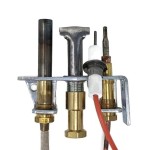How Do You Reface A Fireplace With Stone?
A fireplace is a focal point in many homes, offering warmth, ambiance, and a touch of rustic charm. Over time, the original facing of a fireplace can become outdated or damaged, requiring a refresh. Refacing a fireplace with stone offers a durable and visually appealing solution, transforming the space and enhancing its aesthetic. This process involves applying a new layer of stone over the existing facing, covering imperfections and creating a fresh design. This article provides a comprehensive guide to refacing a fireplace with stone, outlining key considerations, steps involved, and essential tips to ensure a successful project.
Choosing the Right Stone
The choice of stone for refacing a fireplace is crucial, as it dictates the overall appearance and style of the space. Consider the existing decor, architectural style of the home, and personal preferences. Here are some popular options:
- Limestone: A natural stone known for its versatility, durability, and range of colors. It's often used in traditional and farmhouse styles.
- Granite: A durable and elegant option with a wide variety of colors and patterns. It's ideal for contemporary or modern spaces.
- Slate: A natural stone that adds a rustic and earthy feel to any fireplace. It's available in various shades and finishes.
- Marble: A luxurious and sophisticated choice, marble is available in a wide array of colors and patterns. It's often used in formal settings.
- Brick: A classic and versatile option, brick can be used to create a traditional or modern look depending on the color and style of the brick.
Consider the size and shape of the fireplace when choosing the stone. Larger stones can create a bold statement, while smaller stones can provide a more subtle and refined look. Additionally, consider the texture of the stone. Rough-hewn stone adds a rustic charm, while smooth stone creates a sleek and modern feel.
Preparing the Fireplace
Before starting the refacing process, proper preparation is essential for a successful outcome. Here are key steps involved:
- Clean the Existing Facing: Remove any dirt, debris, or loose mortar from the current fireplace facing. This ensures a clean surface for the new stone.
- Remove Existing Trim: If necessary, remove any existing trim or molding around the fireplace. This step allows for a seamless installation of the new stone.
- Inspect and Repair Damage: Carefully inspect the existing fireplace for any cracks, holes, or other damage. Repair these issues before proceeding, ensuring a solid foundation for the new facing.
- Install a Vapor Barrier: A vapor barrier helps prevent moisture damage. Install it behind the new stone facing to protect the fireplace and its surroundings.
- Create a Framework: If you're using stone veneer, you will need to install a framework to support the stone. This is typically done with a metal or wood frame.
These preparatory steps ensure a smooth and professional installation of the new stone facing. By addressing these issues beforehand, you can avoid potential problems during the installation process.
Installing the Stone
The installation process involves placing the chosen stone in a specific pattern on the fireplace, securing it with mortar. This requires precision and knowledge of stonework techniques. Here's a step-by-step guide:
- Lay the First Row: Start by laying the first row of stone on the bottom of the fireplace. Use a level to ensure the row is level and straight. Use a mortar mix suitable for stonework to secure the stones.
- Continue Laying Rows: Follow the pattern you've chosen, laying each row of stone on top of the previous one. Ensure the stones are properly aligned and secured with mortar.
- Apply Mortar: Apply a thin layer of mortar to the back of each stone before placing it on the fireplace. Use a trowel to spread the mortar evenly.
- Cut and Shape Stones: If necessary, cut and shape stones to fit around corners, edges, or other features of the fireplace. Use a stone chisel and hammer for this process.
- Clean Excess Mortar: As you lay the stone, use a damp sponge to clean up any excess mortar. This prevents the mortar from drying and becoming difficult to remove later.
- Allow Mortar to Cure: Allow the mortar to cure completely before applying any sealant or grout.
It's recommended to consult with a professional mason or contractor for guidance and assistance with the installation process. They have the experience and expertise to ensure the project is done correctly and safely.
Additional Tips
Here are additional tips to ensure a successful fireplace refacing project:
- Plan the Design: Before starting the refacing process, create a design plan. This helps ensure a cohesive and aesthetically pleasing look for the fireplace.
- Use Quality Materials: Invest in high-quality stone and mortar for a durable and long-lasting fireplace facing.
- Protect the Surroundings: Cover the floor and surrounding areas to protect them from dust and debris during the refacing process.
- Be Patient: Refacing a fireplace is a time-consuming process. Be patient and take your time to ensure a quality finish.

Reface A Fireplace With The Look Of Stone Or Brick Barron Designs

Refacing A Fireplace With Stone Veneer Horizon

Refacing Fireplace And Chimney Authority

Reface A Fireplace With The Look Of Stone Or Brick Barron Designs

15 Fabulous Fireplace Refacing Ideas Average But Inspired

Remodel Your Fireplace In Natural Stone Use

Refacing Fireplace And Chimney Authority

Faux Stone Panels For Fireplaces

Refacing A Fireplace Can Bring Stellar Results

Stone Fireplace Design And Remodel
Related Posts








